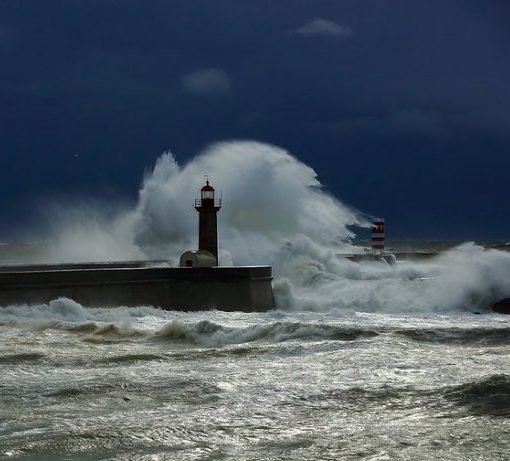 Author: Charles Sizemore
Author: Charles Sizemore
Covestor models: Sizemore Investment Letter and Tactical ETF
I have made a horrendous investment that has cost me far more in time and money than I had planned. Yes, I bought a house.
The idea of your home as an investment is one of those myths that refuses to die, even after the worst real estate crisis in living memory. It seems that there are certain lies we are determined to believe, no matter how much evidence we see to the contrary. Something that pays you an income is an investment. Something that costs you money is an expense. You tell me: which best describes your home?
A house can be an investment, of course. But only if it generates income for you. The house that you call home would certainly not fit this description unless one of two scenarios hold true:
1. You rent out part of your home to tenants, or
2. Your property happens to have exploitable minerals on it.
For the rest of us, a house is a bottomless money pit. Even when nothing needs fixing, mowing, cleaning, or maintaining, you or your spouse will feel compelled to throw away perfectly good money on improvements, furniture, appliances…and the list goes on.
So why, you are no doubt asking, did a man who gives investment advice for a living come to make such a phenomenally bad investment? I have a two year old son, who needs a yard and because my wife wanted something to decorate. It is really that simple. It was a lifestyle choice, and economics were not a consideration.
I bring all of this up for a reason. While I will maintain to my dying day that a personal residence is a poor investment, this doesn’t particularly matter to a family with small children. Things like school districts and soccer leagues matter far more. Demographically, the United States has an enormous pipeline of young families and babies waiting to be born. The children of the Baby Boomers—the Echo Boomers—are just now reaching their peak family formation years. All else equal, this means enormous demand for starter homes in the coming years.
Of course, all else is not equal. Credit conditions are tight, and there is still an enormous supply of foreclosure and pre-foreclosure properties in some markets that is years away from being absorbed. Prices won’t be recovering their 2005 peaks any time soon, or perhaps ever in some of the hardest-hit markets. Still, opportunities are ripe for the picking for investors willing to look. This is a theme I intend to expand upon in the coming months, but I wanted to give you a sneak preview today.
Moving on, we have new developments in the Turkcell (TKC) saga. Readers will recall that Turkcell is a long-time holding of the Sizemore Investment Letter and that the company was my pick in the InvestorPlace.com 10 stocks for 2012 contest. Of the ten professional investors in the contest, I’m currently in 5th place with a year-to-date gain of 19 percent.
My colleague Jeff Reeves of InvestorPlace edged ahead of me recently with his choice of Alcoa (AA) up 20 percent, and financial writer and serial entrepreneur James Altucher is up 21 percent with his choice of Microsoft (MSFT), a long-time recommendation on the Sizemore Investment Letter’s Drip and Forget portfolio.
As we are still barely two months into the year, this should prove to be an exciting contest. My investment thesis for Turkcell was straightforward. When investor risk appetites evaporated in 2011, emerging market stocks in general and Turkish stocks in particular got hit hard. In addition to being a volatile emerging market in its own right, Turkey had the misfortune of being sandwiched between debt-ravaged Europe to its north and the Arab Spring to its south. It should come as little surprise that Turkey fared poorly last year, but as investor risk appetites return I expect to see Turkey do extraordinarily well in 2012.
In Turkcell, we had an additional wrinkle. Due to a power struggle for control of the company between Turkey’s richest man and a group of Russian and Norwegian investors to whom he allegedly owes $1.4 billion, the Board of Directors has been paralyzed and the company missed its last dividend payment.
To clarify, the company did not officially cut or eliminate its dividend. But due to the Board’s infighting, it never got declared or paid. Markets hate uncertainty, and Turkcell’s ownership situation is anything if not uncertain. When the legal drama is finally settled and the dividend payment is resumed, investors who have been avoiding the stock will have the green light they need to pile in.
Turkcell is one of the finest emerging market telecom firms in the world, and the Board issue has been a monumental distraction. When that haze is finally lifted, I would expect Turkcell to jump 10-15 percent within the day and as much as 50 percent over the course of the year.
That day may finally be getting close. A British Virgin Islands court ruled in December that Cukurova, the holding company owned by Mehmet Karamehmet, Turkey’s richest man, had to deposit $1.4 billion in an escrow account by March to comply with the prior court order. Failure to comply will effectively give control of the company to the rival investor group.
We can only wait and see what Karamehmet does, and either way he still has an appeal pending with Britain’s Privy Council. But regardless, this story will be drawing to a close soon, and when it does I expect to see Turkcell’s new Board quickly resume the dividend. Stay tuned.
Our “Glamour and Glitz” investments continue to perform exceptionally well. Daimler AG (DDAIF) is up by fully 34 percent in just a month and a half. The company’s fourth quarter profits beat expectations, and—most importantly—Daimler announced that it would be raising its dividend by 19 percent.
The company has its challenges; the European market remains tepid, and its truck and bus businesses are feeling the effects of slower growth worldwide. But overall, I continue to like Daimler as a “buy.” Diageo (DEO), our hybrid luxury and sin stock investment, has also had a good run. Sales of its whiskies and other premium drinks were up 18 percent in emerging markets in the first half of the company’s fiscal year, led by strong growth in Latin America. And again, most importantly, the company raised its dividend by 7 percent.
Much of our success in 2011 was due to our insistence on loading the Sizemore Investment Letter portfolio with strong dividend payers. Dividends were the only return that many investors saw last year, and they continue to play a major role in the recommendations of this newsletter.
Our investment in high-end auction house Sotheby’s (BID) continues to be volatile, but the fundamentals remain strong and the news good. Rival auction house Christie’s recently made the news with the sale of a Francis Bacon painting that pushed its contemporary art sales to levels not seen since before the 2008 meltdown.
As I’ve already written a thousand times before, I love the high-end art and collectibles markets as a backdoor way to get access to the rise of the nouveau riche in both the developed world and, most importantly, in emerging markets. As the Financial Times writes, “Art experts say growth at the top end of the market has been driven by a new wave of Asian billionaires, especially from China.”
Though we’ve had a few close calls already—including a near default by Greece—the news in 2012 has been mostly good, even while investor sentiment continues to be mostly bad. Even after multiple months of solid gains, most investors are scared to death of putting their money in the stock market. As contrarian value investors, this is fantastic news for us. It tells us that, a few volatile bumps on the road notwithstanding, this bull market still has a ways to run.




